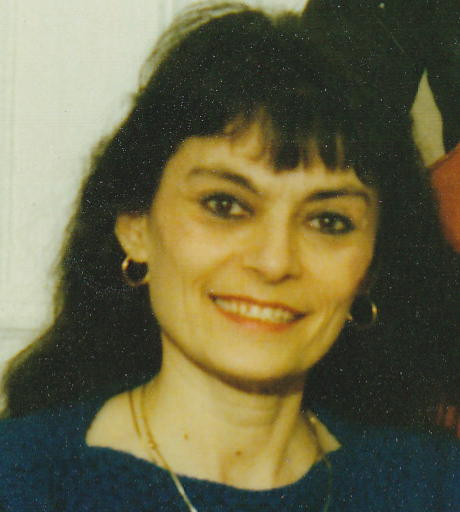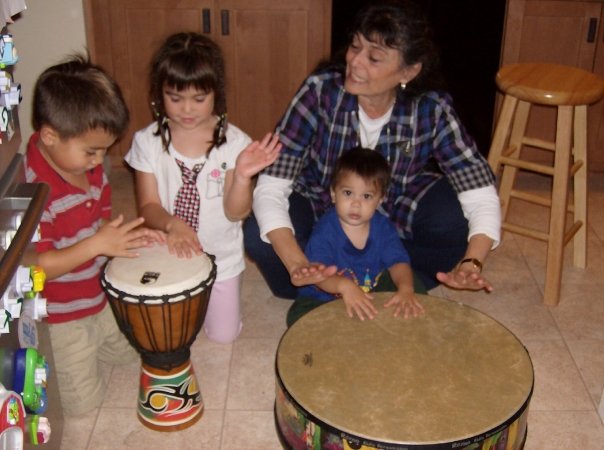Author: Dr. Dorita S. Berger, PhD, MT-BC, LCAT (2015; Jessica Kingsley Publishers, London, UK)
Commentary About My New Book
 I have been working clinically with persons of Autism Spectrum Diagnoses for the past 20 years, and have come to realize that for most music-based clinicians who want to address physiologic, multi-sensory and movement issues observed in this diagnoses, there was no truly systematic, developmental approach to treatment directly addressing deficiencies in auditory and visual processing, proprioceptive and vestibular faltering, motor irregularities, and so many other aspects malfunctioning in this population. At best, there seemed only interventions that indirectly addressed such treatment goals and objectives of music-based clinical ASD work. I envied OTs and Speech Pathologist colleagues who had specific guidelines and interventions in their approach to physiologic and sensorimotor deficiencies and wondered, “… how music treatment can go further, and what might be key interventions for treating some of the ‘causes’ impeding language, socialization, and motor function?”. What are the guidelines for me, the Music-based clinician to follow in order to achieve real evidence-based results beyond self-report?” Furthermore, because so much of music therapy training wrests in psychodynamic features (e.g., ‘relationship’, transference/counter-tranference) , many psychology-based approaches often are less effective when treating non-verbal, sensorimotor-deficient
I have been working clinically with persons of Autism Spectrum Diagnoses for the past 20 years, and have come to realize that for most music-based clinicians who want to address physiologic, multi-sensory and movement issues observed in this diagnoses, there was no truly systematic, developmental approach to treatment directly addressing deficiencies in auditory and visual processing, proprioceptive and vestibular faltering, motor irregularities, and so many other aspects malfunctioning in this population. At best, there seemed only interventions that indirectly addressed such treatment goals and objectives of music-based clinical ASD work. I envied OTs and Speech Pathologist colleagues who had specific guidelines and interventions in their approach to physiologic and sensorimotor deficiencies and wondered, “… how music treatment can go further, and what might be key interventions for treating some of the ‘causes’ impeding language, socialization, and motor function?”. What are the guidelines for me, the Music-based clinician to follow in order to achieve real evidence-based results beyond self-report?” Furthermore, because so much of music therapy training wrests in psychodynamic features (e.g., ‘relationship’, transference/counter-tranference) , many psychology-based approaches often are less effective when treating non-verbal, sensorimotor-deficient
ASD persons who barely have a sense-of-self, let alone a sense of body or relationship to self with other. The role of physiology in human function and malfunction is often not part of music therapy treatment training for any neurophysiologic or even psychologic diagnoses.
My music performance training for the BFA from the School of Music of Carnegie Mellon University included several semesters of Dalcroze Eurhythmics, then taught by the late, internationally renowned Marta Sanchez. I did not realize at that time that the day would come when I would be applying many of the exercises and concepts of this music-training approach to my sensorimotor clinical work. As I perused my audio and visual tapes in preparation for my PhD research project, I came to realize that the positive results I had been obtaining over the 20 years of working with ASD children and adults, were directly related to the session formats and rhythmic movement approaches with which I was intervening in treatment protocol. Also, the flow of sessions, moving from breath control to quiet the system, to movement reflecting improvised music, were indeed addressing physiologic and sensory characteristics.
 This new book, the title of which is the same as at the heading of this paper, contains much information describing Eurhythmics and how various related interventions address sensorimotor and movement characteristics in the ASD and other populations displaying similar attributes. The book is in three parts. Part One discusses sensory systems, the brain and HPA Axis (Hypothalamic-Pituitary-Adrenal Axis) that drives so much of the erratic behaviors in various diagnosed populations, and an overview of the possible meaning of many ASD behaviors. Part Two contains five chapters describing five discreet session modules of sensorimotor-based rhythmic- movement interventions in a typical session flow, with the overall GOAL specific in addressing a client’s COPING ability in handling various environmental aspects by becoming comfortable within his/her body, training the ear to focus on pertinent sounds rather than just hearing a tsunami of sounds, moving limbs and body efficiently for developing a sense-of-self that is prerequisite to socialization skills and pragmatic language, and so much more. Nine different case samples throughout Part Two describe the interventions in action, and the particular results, illustrating how eurhythmics exercises work, and why particular interventions are applied (objectives to the overall Goal). In my view, the main GOAL of this systematic music-based treatment, for any population, is the development of a COPING ability: Calmness—Organization— Pacing—INtegration—Growth. That is the underlying theory of this modular approach to music-based treatment of ASD and other behavioral and physiological characteristics.
This new book, the title of which is the same as at the heading of this paper, contains much information describing Eurhythmics and how various related interventions address sensorimotor and movement characteristics in the ASD and other populations displaying similar attributes. The book is in three parts. Part One discusses sensory systems, the brain and HPA Axis (Hypothalamic-Pituitary-Adrenal Axis) that drives so much of the erratic behaviors in various diagnosed populations, and an overview of the possible meaning of many ASD behaviors. Part Two contains five chapters describing five discreet session modules of sensorimotor-based rhythmic- movement interventions in a typical session flow, with the overall GOAL specific in addressing a client’s COPING ability in handling various environmental aspects by becoming comfortable within his/her body, training the ear to focus on pertinent sounds rather than just hearing a tsunami of sounds, moving limbs and body efficiently for developing a sense-of-self that is prerequisite to socialization skills and pragmatic language, and so much more. Nine different case samples throughout Part Two describe the interventions in action, and the particular results, illustrating how eurhythmics exercises work, and why particular interventions are applied (objectives to the overall Goal). In my view, the main GOAL of this systematic music-based treatment, for any population, is the development of a COPING ability: Calmness—Organization— Pacing—INtegration—Growth. That is the underlying theory of this modular approach to music-based treatment of ASD and other behavioral and physiological characteristics.
Part Three of the book delves into how this approach can further be adapted for developing COPING skills in other diagnosed populations, because sensorimotor and movement characteristics along with an over-active HPA Axis, are inherent in diagnoses including Post Traumatic Stress Disorder and other psychological problems, various dementias, patients recovering from brain traumas, Coma, Pain, and more. Also mentioned briefly in Chapter 9 of the final section are other significant contributors to movement deficits analyses, including Laban, Feldenkreis and Alexander techniques that can be adapted to music-based treatments for motor inefficiencies and motor planning, often minimally addressed in music therapy interventions.
In sum, I believe that the systematic eurhythmics approach to music-based treatment of diagnoses discussed throughout this book, can provide the clinician with a fresh new ‘clinical eye’ for observing possible causes of various behaviors, even how medical diseases cause havoc with sensorimotor and physiological responses, and how those might be systematically treated through eurhythmics-based interventions. Part Three includes three Appendixes, one with a sample flow-chart documenting progress, another with a formerly published article on the approach with an Alzheimer’s patient, and the third describing issues for an ASD student in a school music class. The latter was included to assist clinicians working in schools, who are often called upon to assist music teachers and others in redirecting ASD students.
Finally, the book contains an exhaustive bibliography of research, Journal articles and books from Neuroscience, Psychology, Physiology, Clinical Music, Movement, and much more, that will direct clinicians to further reading For some clinicians the information in the book may not be entirely ‘new’, but will provide a fresh look at the information, and will reinforce and support one’s own clinical work. For others, both professionals and students, the information and approach detailed may be entirely new, and may require several readings and/or further consultations in order to amalgamate the knowledge into practice. I am available for consultation and supervision, and can be reached by e-mail at dsberger@mags.net. I plan to conduct extensive workshops and presentations on the material beginning in the Fall, 2015, at various regional Institutions (locations to be announced), and will be available upon request to present at various Universities and Conferences.
The book is planned for publication and availability this October, 2015, through Jessica Kingsley Publishers, London, UK, and may also be obtainable through Amazon on line. I sincerely hope that this book defining sensorimotor music-based treatment approach will be of value to the professional clinician, and most of all, to the clients being treated with music therapy.
